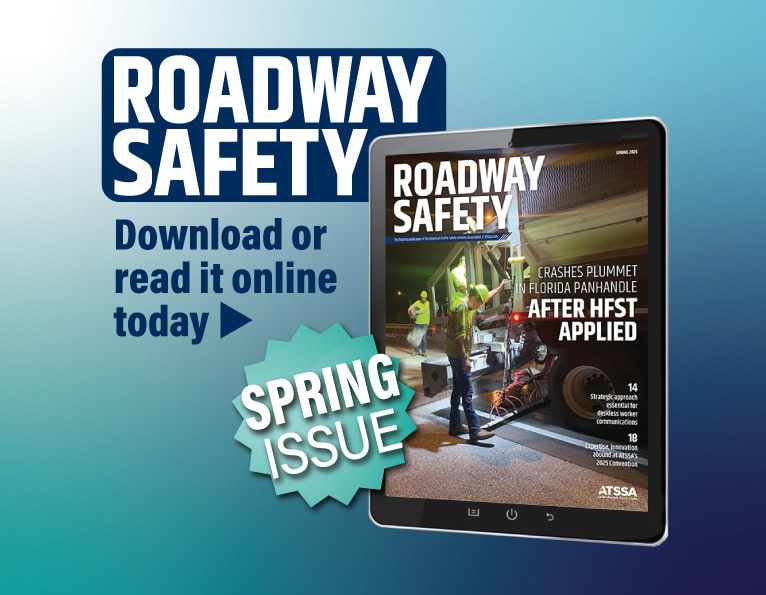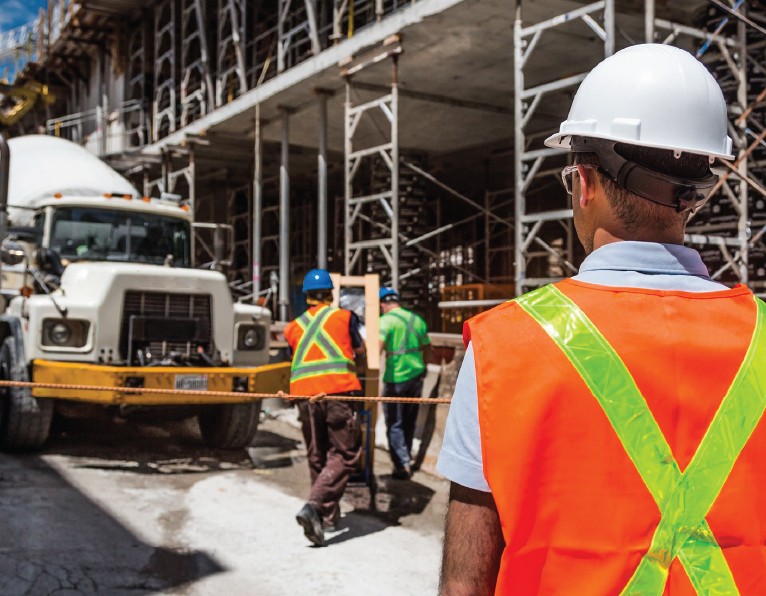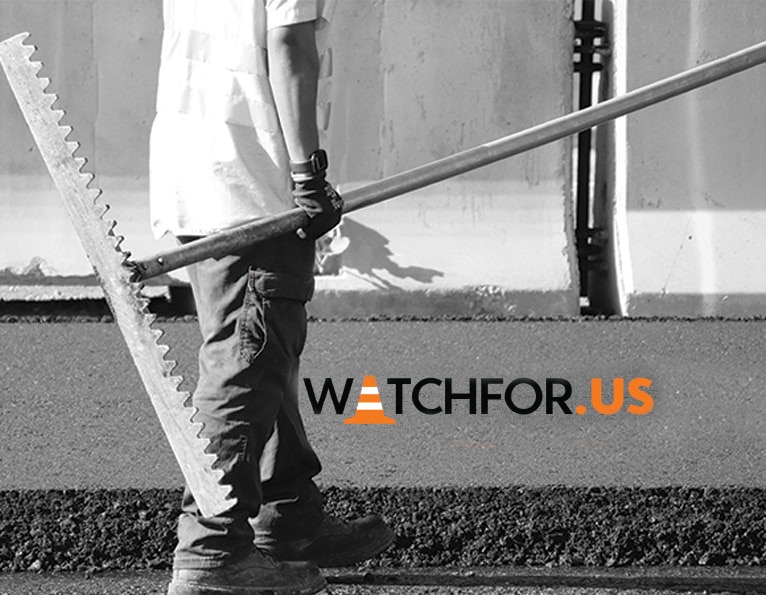The Office of Management and Budget (OMB) on Wednesday published the final guideline for the Build America, Buy America Act, starting a 60-day countdown to its enactment.
Included in the Infrastructure Investment and Jobs Act (IIJA), this expansion of the Buy America program led to the inclusion of a number of materials and products used and manufactured by ATSSA members.
Below, ATSSA’s Government Relations Team provides a summary of the most important sections of the 162-page guidance and will continue to update ATSSA members as more information becomes available. ATSSA also will be holding a virtual town hall on this topic on Sept. 7 at 2 p.m. Registration is now open.
Please contact ATSSA Director of Federal Government Relations Cameron Greene Cameron.greene@atssa.com with any questions and concerns about this topic.
Office of Management and Budget
On Aug. 23, OMB published revised Build America, Buy America BABA guidance related to provisions in IIJA by adding a new part 184 to 2 C.F.R. This OMB document “is intended to be high-level coordinating guidance for Federal agencies to use in their own direct implementation of BABA” requirements included in the IIJA and is an update of initial OMB BABA guidance issued in April of 2022 Memorandum M-22-11 that can be found here.
OMB will be updating Memorandum M-22-11 with a new Memorandum within 60 days of the publication of the final OMB guidance.
The IIJA included many changes to Buy America policies and expanded the application of these requirements to construction materials and certain manufactured products. The recently released OMB Buy America final guidance can be found here. In addition, OMB released a summary of the final guidance that can be found here.
While OMB has stated this is “final guidance,” the document clearly states that “OMB may also issue additional guidance in the future as it receives additional stakeholder feedback from Federal agencies, recipients of Federal awards, contractors, manufacturers, labor organizations, suppliers, industry associations, and others on today’s guidance.”
The effective date for the revised guidance is Oct. 23.
Following are several provisions from the newly released OMB final guidance that may be of interest.
Clarification of Buy America categories – The OMB final guidance states: “An article, material, or supply should only be classified into one of the following categories: 1 iron or steel products; 2 manufactured products; 3 construction materials; or 4 section 70917c materials.” Section 70917c materials are cement, cementitious materials, aggregates such as stone, sand, or gravel, or aggregate binding agents or additives. The revised guidance further explains that an “article, material, or supply should not be considered to fall into multiple categories.” The guidance also notes that, in “some cases, an article, material, or supply may not fall under any of the above-listed categories” – such as temporary items. See below.
Temporary item clarification – OMB has clarified that Buy America requirements apply only to products that are permanently incorporated into a project or are an integral part of the infrastructure. Buy America requirements do not apply to items temporarily brought to the construction site or that are not permanent fixtures. OMB replaced the phrase “used in the project” from Memorandum M-22-11 with “incorporated into the project” in the final guidance. In addition, the final guidance states: “On the issue of permanent incorporation, Memorandum M-22-11 explained that the Buy America preference only applies to articles, materials, and supplies that are consumed in, incorporated into, or affixed to an infrastructure project. As such, it does not apply to tools, equipment, and supplies, such as temporary scaffolding, brought to the construction site and removed at or before the completion of the infrastructure project. Nor does a Buy America preference apply to equipment and furnishings, such as movable chairs, desks, and portable computer equipment, that are used at or within the finished infrastructure project but are not an integral part of the structure or permanently affixed to the infrastructure project. This policy is not modified by the revised guidance issued today in part 184.”
Construction materials definition – The final guidance includes a definition of the term construction materials. Specifically, the final guidance states: “Construction materials means articles, materials, or supplies that consist of only one of the items listed in paragraph 1 of this definition, except as provided in paragraph 2. To the extent one of the items listed in paragraph 1 contains as inputs other items listed in paragraph 1, it is nonetheless a construction material.
The listed items are:
(i) Non-ferrous metals;
(ii) Plastic and polymer-based products including polyvinylchloride, composite building materials, and polymers used in fiber optic cables;
(iii) Glass including optic glass;
(iv) Fiber optic cable including drop cable;
(v) Optical fiber;
(vi) Lumber;
(vii) Engineered wood; and
(viii) Drywall. Minor additions of articles, materials, supplies, or binding agents to a construction material do not change the categorization of the construction material.”
The final guidance also makes clear that OMB may further revise the list of covered construction materials by stating: “In future revisions of part 184, OMB may consider adding new items to its list of construction materials or revising the definition in other ways consistent with BABA.”
Section 70917c materials – Consistent with the IIJA, the OMB final guidance states that the term “construction materials” does not include section 70917c materials “cement and cementitious materials, aggregates such as stone, sand, or gravel, or aggregate binding agents or additives”. The final guidance does not, however, exempt these types of materials from Buy America requirements as manufactured products in certain situations.
Glass beads – With regard to glass beads and whether they are considered a construction material, the OMB final guidance states: “In reaching its final list of construction materials for the revised guidance, OMB used the list provided by Congress in its Findings in section” of the BABA provisions of the IIJA.
OMB notes that Congress specifically identified “glass” in section 70911 [of the IIJA], “Findings,” as one of several “common construction materials.” While OMB believes that this list is not exhaustive, OMB includes all items in the Findings section as listed construction materials. Thus, OMB has included glass in the revised guidance as a “construction material.”
“OMB has not included a separate category for optic glass in the revised guidance. The general principles that apply throughout the revised guidance should be used to determine how to treat glass products such as recycled glass and glass beads. Federal agencies may decide to provide additional guidance on those topics for products that are used on infrastructure projects they provide funding for. If stakeholders believe that waivers are justified in the public interest or for other reasons in relation to glass, the waiver process would be the appropriate mechanism to address concerns related to this topic.”
Treatment of raw materials – OMB did provide some clarity as it relates to raw materials and application of the Buy America requirements. Specifically, the final guidance states: “Raw materials may include unprocessed or minimally-processed materials such as natural resources, which serve as the basic materials used in manufacturing processes for other finished products and components of finished products. OMB does not believe that Congress intended to apply the Buy America preference for manufactured products to non-manufactured or raw materials if they are brought to the work site in an unprocessed or minimally-processed state such as topsoil, compost, and seed. Thus, OMB agreed with commenters that it was important to provide affirmative content and meaning for the definition to provide further clarity. If non-manufactured or raw materials are brought to the work site in an unprocessed or minimally processed state, Federal agencies should not classify these items as manufactured products in their implementation of BABA preferences. OMB further clarifies that non-manufactured or raw materials mixed off-site with other non-manufactured or raw materials of similar types, or with similar but not identical properties, would not necessarily result in classifying the mixed material brought to the work site as a manufactured product if it remains in an unprocessed or minimally processed state. OMB recognizes that an overly strict application of the revised definition of “manufactured products” could potentially result in classifying certain technically composite or compound raw materials, such as fill dirt, as manufactured products, which is not OMB’s intent.
Buy America requirements for a manufactured product – The final guidance states that manufactured products must be manufactured in the United States and the cost of components of a manufactured product that are manufactured in the United States must exceed 55% of the cost of all components. The final guidance further provides that “manufactured products” means articles, materials, or supplies that have been: “i Processed into a specific form and shape; or ii Combined with other articles, materials, or supplies to create a product with different properties than the individual articles, materials, or supplies.” The final guidance also clarifies that construction materials and iron or steel products should not be considered manufactured products.
There are four steps to making the calculation for the cost of components:
1. Determine the components manufactured in the United States.
2. Determine the cost of those components manufactured in the United States.
3. Determine the cost of all components.
4. Divide the cost determined in step 2 by the cost determined in step 3. If the fraction is more than 55%, the manufactured product complies with the Buy America requirements as long as the manufactured product is, itself, manufactured in the United States.
Buy America Waivers – The OMB final guidance mentions the possible need for Buy America waivers by stating: “OMB agrees that, under certain circumstances, general applicability waivers may be found by Federal agencies to be in the public interest. For example, they may create efficiencies or ease burdens for recipients”.
There are three “justifications of waivers” included in the final guidance: “A Federal awarding agency may waive the application of the Buy America Preference in any case in which it finds that:
1. Applying the Buy America Preference would be inconsistent with the public interest a “public interest waiver”;
2. Types of iron, steel, manufactured products, or construction materials are not produced in the United States in sufficient and reasonably available quantities or of a satisfactory quality a “nonavailability waiver”; or
3. The inclusion of iron, steel, manufactured products, or construction materials produced in the United States will increase the cost of the overall infrastructure project by more than 25 percent (an “unreasonable cost waiver”).”
The OMB final guidance also “continues to remind Federal agencies of the need to provide a comment period of not less than 30 days on a proposal to modify or renew a waiver of general applicability”.
NOTE: Since 1983, the Federal Highway Administration FHWA has had a public interest waiver of Buy America requirements for manufactured products on federal-aid highway projects. However, the IIJA requires every agency to review any waiver in place for more than five years to determine whether to continue such waiver. FHWA is currently undertaking a review of its waiver for manufactured products, and we await a decision.
U.S Department of Transportation
The U.S. Department of Transportation USDOT has finalized a narrow waiver of Buy America requirements. This USDOT waiver was published in the Federal Register on Aug. 16 and can be found here.
Key provisions of this waiver include the following:
“Based on all the information available to the Agency, DOT finds that it is in the public interest to issue a waiver of BABA’s domestic preferences for iron and steel, manufactured products, and construction materials used in projects funded under DOT-administered financial assistance programs for iron, steel, manufactured products, and construction materials under a single financial assistance award for which:
- The total value of the non- compliant products is no more than the lesser of $1,000,000 or 5% of total applicable costs for the project; or
- The total amount of Federal financial assistance applied to the project, through awards or subawards, is below $500,000.
- The waiver is applicable only to awards that are obligated or subawards that are made on or after the effective date of the waiver. The waiver is applicable to subawards only if the subawards are made by a pass-through entity for a specific project.”
Published Date
August 25, 2023
Post Type
- News
Topic
- Advocacy
- Government Relations
Group Type
- Committee
Related News Articles
May 21, 2025
Roadway Safety explores HFST, advocacy, deskless workers and more
Roadway Safety explores HFST, advocacy, deskless workers and more The Florida Department of Transportation (FDOT) demonstrated the value of high…
May 7, 2025
Join ATSSA in D.C. to celebrate construction on the National Mall
Join ATSSA in D.C. to celebrate construction on the National Mall Join ATSSA on the National Mall, May 14-16 to…
April 17, 2025
NAPA, ATSSA aim for worker safety considerations in next highway bill
NAPA, ATSSA aim for worker safety considerations in next highway bill Work zone safety & Washington, D.C. The National Asphalt…


